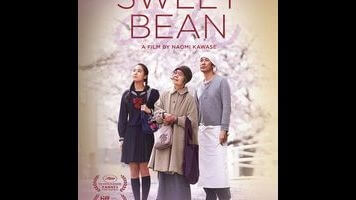Japanese filmmaker Naomi Kawase has been a fixture on the festival circuit for two decades—especially at Cannes, where the programming team has remained loyal ever since Suzaku won the Caméra D’Or (for best first film) there back in 1997. American distributors, on the other hand, have stayed far, far away. Not one of Kawase’s first seven narrative features received a U.S. theatrical release; even The Mourning Forest, which won the Grand Prix (second prize, basically) at Cannes 2007, was politely ignored in the States. (To put that in perspective, every single other Grand Prix winner since at least 1990 has played in U.S. theaters.) Apparently, Kawase’s vaguely pantheistic, Shinto-influenced sensibility, emphasizing the communion of humanity and nature, isn’t perceived as something that would appeal to an American audience. And yet here’s her latest feature, Sweet Bean, finally ending the drought. What makes this film more potentially enticing to Westerners than the seven films that preceded it? Two words: food porn.
The main attraction here is a Japanese confection, dorayaki: two small pancakes with a filling of sweet red bean paste (called “an” in Japanese; that’s also the film’s original title). Most of Sweet Bean takes place inside the tiny shack where middle-aged Sentaro (Masatoshi Nagase, best known in the U.S. as the Carl Perkins-obsessed tourist in the first segment of Jim Jarmusch’s Mystery Train) cooks and serves the treats, mostly to teenage schoolgirls who like to tease him about his placid demeanor. One day, an elderly woman, Tokue (Kirin Kiki, from Still Walking), chances upon Sentaro’s stand and samples his wares, praising the pancakes but criticizing his an, which he purchases in bulk from an outside supplier. As it happens, Tokue has been making an for half a century, and she quickly winds up working as Sentaro’s assistant—at which point his sales boom to the point where a line forms down the street and he continually gets sold out. But Tokue, for all her own sweetness, is hiding a dark secret; when word of it gets out, business dries up.
That last sentence makes Sweet Bean sound much more dramatic and compelling than it actually is. While this is Kawase’s most straightforward, accessible movie, it’s also perhaps her dullest, sustaining a single maudlin note for nearly two hours. Kiki does a terrific adorable-granny routine, but the reason Tokue isn’t actually a grandmother (or even a mother), when revealed, allows for no response other than pity, which is what she gets from both Sentaro and from the film’s awkwardly integrated third main character, a regular customer named Wakana (Kyara Uchida, who’s Kiki’s real-life granddaughter). Mouths will water during the film’s extended sequence depicting the creation of an, but even that pleasure winds up being undermined by Tokue’s New-Agey instructions to “listen to the stories the beans tell” and so forth. In the end, Kawase reverts to form, illustrating her banal follow-your-bliss message with endless shots of cherry blossoms. Maybe those neglectful U.S. distributors had the right idea all along. Or just had good taste.









































